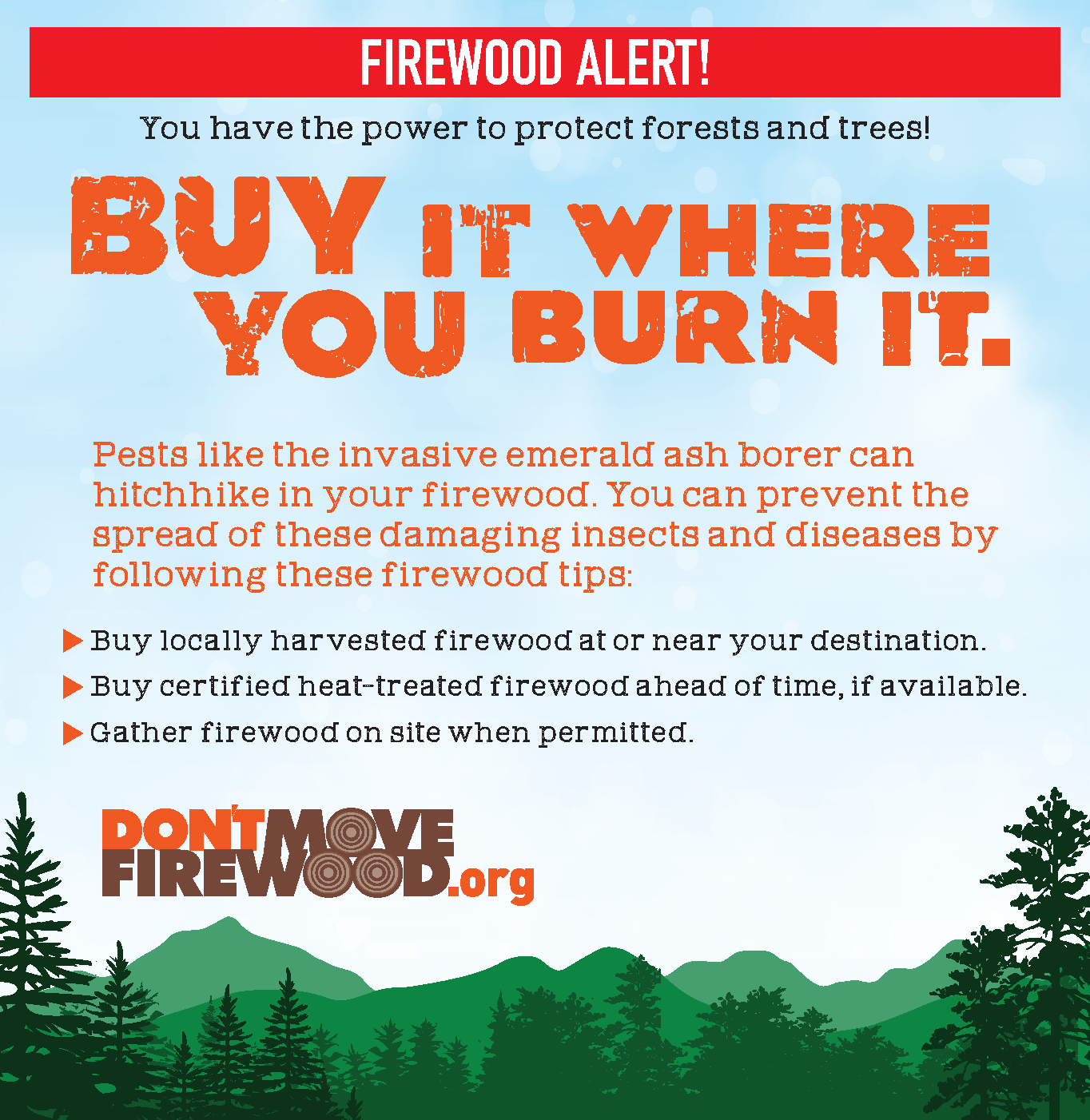
When Camping, Know Where Your Firewood Comes From
Title

Body
Transporting firewood long distances may seem like a harmless camping routine, but it can cause a significant impact on the health of our forests.
Every summer, my family delights in spending long weekends in the Adirondacks, where we can kick back and swap stories around a campfire. Who doesn’t enjoy gooey smores, laughter, and the sense of comfort that these types of settings can provide? Whether outdoors or indoors or for ambiance or heat, these fires require wood to serve their purpose. But where is that wood coming from?
Unfortunately, many invasive species that have devastated our region’s forests are introduced through moving firewood from an area of infestation to a previously uninvaded area. Eggs, adults, seeds, and diseases caused by invasive threats can be moved in this manner. In fact, the movement of firewood and subsequent introduction of forest pests and diseases into new habitats are believed to be responsible for between $4.2- $4.4 billion per year in damages, management costs, and lost revenue in the United States.Look no further than the destruction caused to our beloved ash trees by the invasive emerald ash borer (EAB) to understand the dire consequences that accidental introductions through the movement of firewood can have on our forest ecosystems. All species of ash trees are susceptible to EAB and the pest kills nearly every untreated ash tree it inhabits. Once trees are infested, they become extremely hazardous, losing 80% of their structural integrity within 3-5 years, making it not only an ecological issue but a safety threat as well.
And it’s not just EAB that has been introduced and continues to spread through firewood introductions. Asian long-horned beetles and gypsy moths are two more of over 140 forest pests and diseases are known to be moved through firewood. With the imminent threats posed by spotted lanternflies and leaf diseases such as oak wilt and beech leaf disease, there’s even more reason to be mindful of what and how we are transporting goods, including firewood, across borders and ecosystems.
Fortunately, the Trail Conference is leading the charge to combat these forest pests before they can take hold. Our Conservation Dogs duo of Fagen and Dia are trained to sniff out both oak wilt (a fungus that causes rapid mortality of oak trees, especially red oak) and spotted lanternfly, helping to detect and prevent further spread of these species in our region. Through the Lower Hudson Partnership for Regional Invasive Species Management (PRISM), we are helping to promote and encourage participation in the citizen science-powered Monitoring and Managing Ash (MaMA) program to search for lingering ash trees, or those trees that stay healthy in the midst of an emerald ash borer infestation. We do this in the hopes of restoring ash through grafting and selective breeding of these robust trees. We are also leading efforts to map the distribution of beech leaf disease (BLD) in our region through our Invasives Strike Force EcoQuest Challenge program, in hopes of better understanding the primary means of spread of BLD so we can prevent future introductions.
With the 2021 camping season underway, the NYS Department of Environmental Conservation recently released new guidelines and regulation reminders regarding firewood transportation to promote healthy ecosystems. The current regulations include prohibiting the movement of untreated firewood from outside of the state and prohibiting untreated firewood grown in the state from being transported more than 50 miles from its source.
If we can all band together to use only locally sourced or properly treated firewood and commit to not transporting wood long distances, we can continue to enjoy the warmth of a good campfire without fear of accidental introductions of invasive species. For more information on firewood as a method of spread of forest pests or to learn how you can help in the efforts to prevent unintentional introductions, visit dontmovefirewood.org
